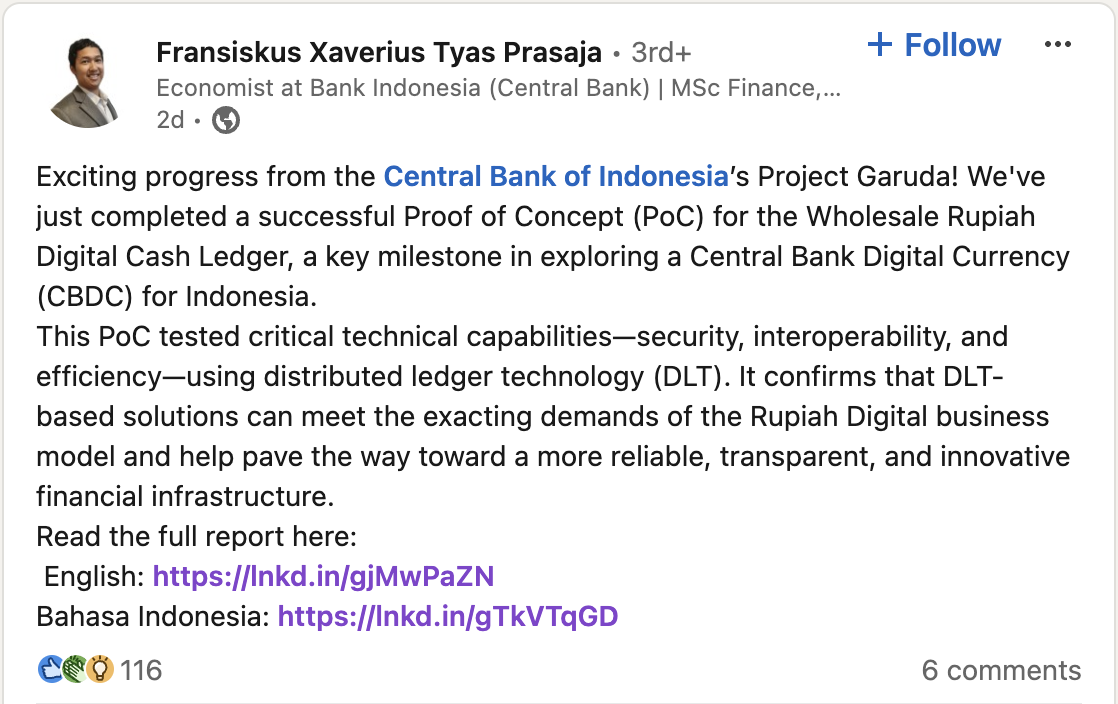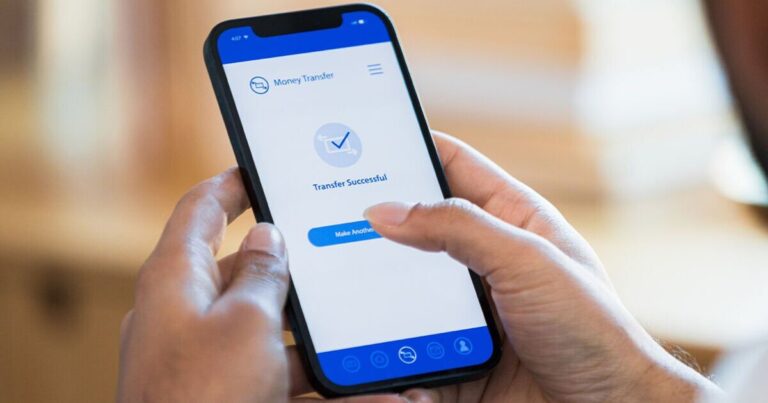Last updated:
 Why Trust Cryptonews
Why Trust Cryptonews
Ad Disclosure
We believe in full transparency with our readers. Some of our content includes affiliate links, and we may earn a commission through these partnerships.

Bank Indonesia has achieved a significant milestone in exploring a central bank digital currency (CBDC). It completed the Proof of Concept (PoC) for the Wholesale Rupiah Digital (wRD) Cash Ledger.
This achievement marks the conclusion of the first phase of Project Garuda, a groundbreaking initiative to develop a digital Rupiah. It aims to make the digital Rupiah a legal tender central to the country’s financial modernization efforts.
What Is Next for CBDC in Indonesia?
Governor Perry Warjiyo emphasized in the whitepaper that the digital Rupiah represents Bank Indonesia’s proactive response to the rapid transformation of the financial landscape. Moreover, the regulator wants to be a single issuer of a state digital currency.
The project seeks to create a unified and interconnected ecosystem capable of supporting diverse financial transactions while safeguarding the integrity of the Rupiah.
The design of the digital Rupiah focuses on interoperability, ensuring seamless integration across various platforms and systems.
With it, Indonesia aims to strengthen its financial infrastructure by adopting it all across its monetary sovereignty.
Insights from the Proof of Concept
The PoC phase explored three fundamental business processes critical to implementing the Wholesale Rupiah Digital: issuance, redemption, and fund transfer.
These processes were tested using two advanced distributed ledger technology (DLT) platforms:
- Corda, developed by R3
- Hyperledger Besu, created by Kaleido
Over 55 test scenarios evaluated the platforms’ suitability for the wRD business model, focusing on resilience, privacy, speed, scalability, and fault tolerance.
Fransiskus Xaverius Tyas Prasaja, an economist at Bank Indonesia, highlighted that the technical success of the PoC validated DLT’s potential to meet the rigorous demands of the Rupiah Digital framework.

Corda employs a central notary system to validate transactions. It ensures integrity through a directed acyclic graph interconnecting transaction data.
Meanwhile, Hyperledger Besu leverages a proof-of-authority mechanism with multiple validators, maintaining data integrity within a blockchain-based structure.
Notably, integrating smart contracts also emerged as a key innovation during the PoC phase. These programmable agreements enhanced transaction efficiency and offered greater flexibility.
Moreover, the PoC demonstrated that DLT platforms can seamlessly integrate with conventional financial systems through ISO 20022 standards. It ensures compatibility with existing frameworks while enabling connectivity with other distributed systems.
Transparency has been a cornerstone of Project Garuda’s development. Bank Indonesia released a comprehensive whitepaper titled “Project Garuda: Navigating the Rupiah Digital Architecture,” detailing the project’s phased approach.
The PoC represents the first phase, laying the groundwork for the Intermediate State, where operationalization and scaling will take center stage.
Deputy Governor Juda Agung also stressed the importance of these findings. He stated that the insights gained from this phase will serve as a foundation for refining the digital Rupiah’s business and technical dimensions.
“The success and various insights from this proof of concept will form the foundation for strengthening the business and technical aspects of the Rupiah Digital in the future.”
The next steps will focus on operational readiness, scalability, and ensuring that the digital Rupiah is equipped to serve the entire Indonesian population.



















